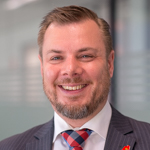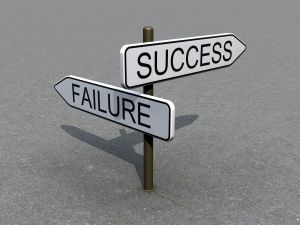My journey to CIO
Today I was promoted to CIO within the Naval Shipbuilding College, to build on the vision of a data-driven enterprise to evolve the sovereign capability of naval shipbuilding in Australia. I am honoured to be recognised after my first eight months to be credited with having the abilities and approach to drive forward the growth and evolution of NSC. My journey to CIO has taken me nearly 30 years, built on constant growth in technical skills, 18 years of management experience and evolution of thinking and approach.
After my IT & Media degree where I did my Honours dissertation on user interface design, I started at the bottom – in filing temp jobs, then progressed helpdesk for a database company and then ended up in telephone support for a dial-up Internet company in the late 90’s – where I learned customer service and that many people have a fear of ‘pressing the wrong button’ and are resistant to change.

Then my career path evolved into my first management position, where I built and grew the IT capability (and my first small 10 rack server room) for a startup company called Lava with a ‘paperless office’ solution – where I learned planning and scheduling, translating business requirements into IT solutions and that people with IT skills in software do not necessarily have the skills to build an effective and reliable IT infrastructure.
Whilst at Lava, I undertook a training program in Novell NetWare – multiple week-long training courses and then 5 exams. Just before I finished, Lava decided to switch to Windows NT, instantly rendering my certification path obsolete. This experience taught me that most technology certifications are a gamble on which technology will be valid in years to come – what was the industry standard one day can be out of fashion and then irrelevant later.
After Lava went bankrupt, I joined another software company that was rapidly growing, to again build their IT infrastructure and core systems. Chordiant software exposed me to my first leadership role, with 6 direct reports, supporting 350 staff, and built a further 3 server rooms during relocations, expansions and mergers. Being the IT Manager at Chordiant taught me new technologies with extensive off-site training and gave me the experience of managing people and a major merger. Then there was my unexpected redundancy (along with 30 % of the rest of the company) and Chordiant was later put up for sale.
After getting married, I joined London Ambulance Service as Head of Systems, where I learned the focus on reliability and response of systems with new technologies such as clustering and load balancing. I learned about how to motivate staff and manage expectations of other departments. I also learned a lot about cost management, budgeting and efficient use of funds.

When I migrated to Australia in 2003, local employers did not recognise my background and I ended up taking an administrator job at UniSA, in an Active Directory role that I stated I was not qualified for – but then I ended up transforming the AD design to be more efficient and stable, and branched out into optimising the server room and systems monitoring. That role taught me to have confidence in my ability to see solutions through a fresh perspective in areas that I may not be an expert in.
When I was headhunted to join SA Ambulance Service as General Manager of IT, it exposed me to a new approach in IT department management; hands-off and managing an outsourced contract. I was directly managing 17 staff, and given ever-decreasing budgets and limited flexibility and control – I learned a whole new way of leadership through politics and outsourcing. I learned the power of culture, and the inertia of existing process and practice.

Shaken by my experience at SAAS, I stepped back to a “more fun” role at APA Group, building and fitting out three new datacentres, and then architecting the infrastructure. I learned a lot from APA about process and governance, as well as new technologies.
Headhunted by VMware, I was in a small site of 3 in a large organisation of 14,000. VMware is a very forward-looking company and I was given a perspective to engage with C-suite roles and to transfer my focus from infrastructure and technology towards business outcomes and capabilities. Even though I had already had 18 years of management experience, my time at VMware elevated my thinking to IT capability leadership.
My time as a consultant started with SMS where I was recommended by a colleague, which then became ASG Group, and then I was headhunted to Innodev. I spent 6 years working for 28 different companies, where I learned more about Cloud, discovered Change methodologies and Agile, embraced new ways of working and Office 365. Being much more of a hands-off role in Architecture and Strategy, my time as a consultant allowed me to solidify my thinking and understand that even though technology changes – the focus always needs to be on people; embracing peoples’ requirements. I expanded my skills in CX/UX, analysis of business needs, workshop and interview techniques, and how to influence change. I learned so many new skills and approaches that it secured my vision for my career direction / path back towards leadership and strategy.

Once I completed my #QuanticMBA in 2019, I threw myself into my quest for a transformative CIO role where I could make a difference. I applied for 9 CIO roles in 2019, and a common response was that they would not consider me because I had not been a CIO before, no matter that I had many years of experience in the area. I was then questioning how I would cross the chasm between management roles and leadership roles.
So, what is in a title? Is the old adage that CIO stands for “career is over” true? I am confident that my new role is a new beginning for me, not an end – not a pinnacle achieved and laurels to sit back on. It is an opportunity to stand on my technical experience and capabilities, to build on how I have worked my way up through the industry, to build NSC. into a data-driven enterprise. I see that technology is the tool, but people are the focus.